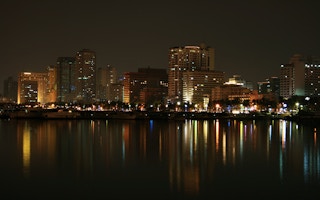Businesses in the Philippines face some of the highest grid-tied energy costs in Asia, yet these same customers frequently experience blackouts and brownouts due to high and growing electricity demand. In other words, not only is electricity expensive for businesses in the Philippines, but it’s also unreliable. Infrastructure and energy inefficiencies are estimated to cost the Philippines $20 billion annually.
To continue reading, subscribe to Eco‑Business.
There's something for everyone. We offer a range of subscription plans.
- Access our stories and receive our Insights Weekly newsletter with the free EB Member plan.
- Unlock unlimited access to our content and archive with EB Circle.
- Publish your content with EB Premium.
These factors, combined with new government incentives, are coming together to create a strong case for renewable energy. Adoption of solar and wind power is already growing quickly, but many more renewable energy projects in the country are expected to get off the ground.
One of the key aspects to widespread renewable energy adoption in the Philippines, and other developing countries, is increased access to financing options. By reducing or eliminating the upfront costs associated with the implementation of renewable energy systems, both businesses and financiers stand to gain.
Powering the Philippines’ economic growth
As its economy grows, it’s widely known that the Philippines will face problems with current infrastructure — especially with regard to energy. The country is plagued by power outages due to an insufficient number of power plants and rising electricity demand.
Given the frequency of extreme weather events like the recent Typhoon Haiyan, it is also clear that a long-term view on energy resilience is necessary. Sustainable economic growth will require reliable energy sources. In this context, investments in renewable energy systems that improve resilience and reliability are not risky or costly,, especially when compared to the economic impact caused by current inefficiencies.
Many Filipino companies have faced challenges in obtaining financing for wind and solar systems, including insufficient cash to cover the upfront capital costs, uncertain or lack of incentives, and inadequate financing products from local banks. Overcoming these roadblocks, however, is getting easier for business and financiers alike. Uncertainties can be put to bed through fixed electricity prices and monthly lease payments.
“
One of the key aspects to widespread renewable energy adoption in the Philippines, and other developing countries, is increased access to financing options. By reducing or eliminating the upfront costs associated with the implementation of renewable energy systems, both businesses and financiers stand to gain.
For example, for local businesses interested in generating onsite renewable energy, leasing a wind or solar system is a quick and easy alternative to paying the system’s full upfront costs. Through a lease structure, companies pay a fixed monthly amount over a set period of time and can benefit from the electricity generated. Monthly payments are usually lower than the company’s savings in its utility bills, thereby leading to overall savings for customers from day one.
Options like Power Purchase Agreements (PPAs) also allow businesses to utilize renewable energy without having to pay for its upfront costs. PPAs are typically long term agreements where the price of electricity is fixed, thereby reducing risks associated with fluctuating and rising electricity costs for businesses. Companies will usually pay less for electricity consumption through a PPA structure than what they currently pay in their utility bills.
Full service companies like UGE bring together all the moving parts of banks, customers and partners, to make it easier for customers to access these financing options.
While these types of financed payment structures are already relatively common in the United States and Europe, they are less widespread in developing countries like the Philippines. In fact, UGE is one of the first companies to facilitate these financing options so that Filipino customers can reap the benefits of renewable energy generation without having to pay upfront costs .
With renewable energy maturing in Europe and North America, investment risk and returns have reduced for financiers. So forward-looking investors in search of higher returns and willing to expand their horizons should look to the South Pacific, where taking a little more risk can mean a higher return.
Yes, the Philippines may be a riskier market than the US, but not compared to other emerging markets. Stability is key in renewable energy investment, and by improving local policies and macroeconomic stability, the Philippines is coming out ahead of its developing counterparts. Many other nations may soon be following their lead.
The goal of reliable, clean electrification is now attainable
With a country of nearly 96 million people spread across several thousand islands, the Philippines’ growing economy will result in higher energy demand for the years to come.
The most effective solution to meet this growing demand is distributed renewable energy systems. Flexible financing to reduce upfront capital requirements are a key aspect to unlock the potential of renewable energy generation. For Filipino businesses, financiers, and citizens alike, there is much to gain.
Mariana Cardenas leads financing efforts at UGE, a global provider of renewable energy solutions.











